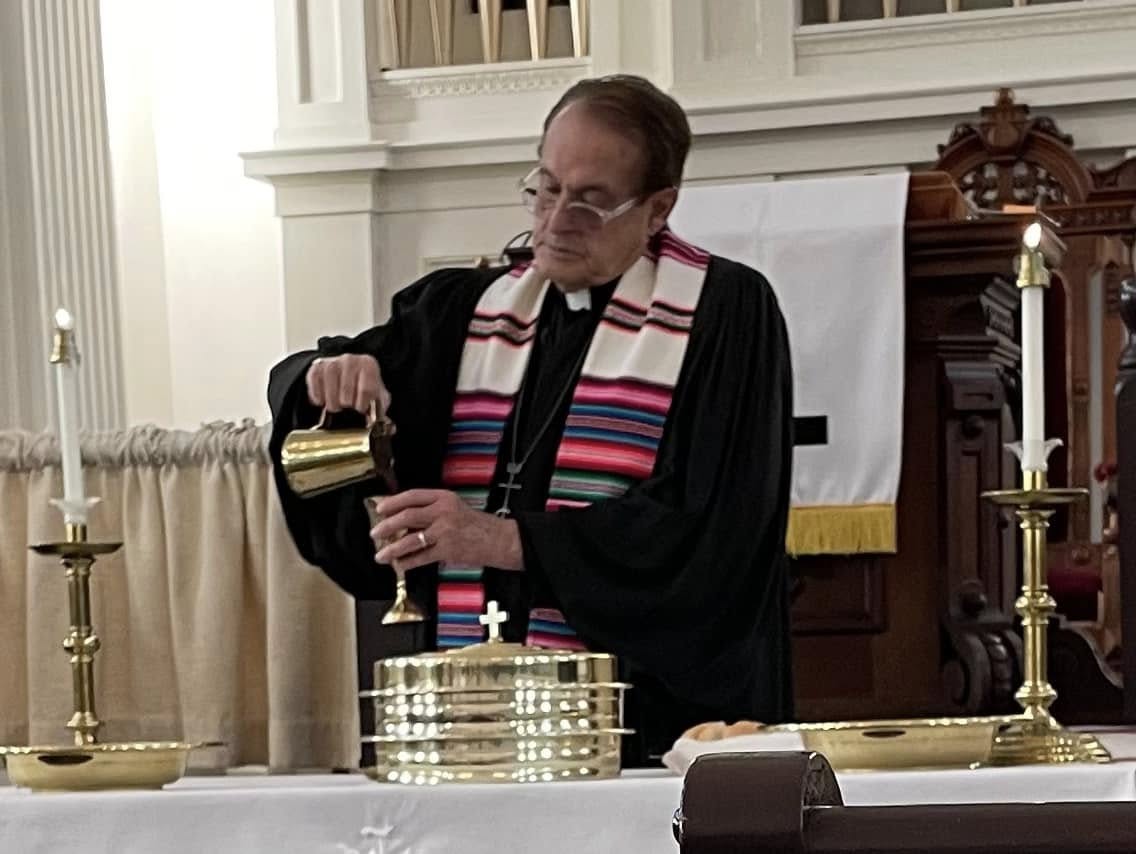Sermon Sunday March 2, 2025
Rev. Norman A. Michaud
“Holy Smoke”
Luke 9: 28-43
The Season of Epiphany ends today with our Lectionary reading of Luke 9: Transfiguration. Transfiguration means change. Next Sunday, March 9th, Daylight Savings Time begins. Spring nears. Don’t forget the time change. We all have had enough of winter and welcome the return of light to our evenings. Christians begin the Lenten journey this week on Ash Wednesday, which culminates on Easter Sunday, April 20th.
Last Sunday, we listened to Jesus’ Sermon on the Plain in Luke 6. The Lectionary then leaps ahead to Luke 9. In today’s text, the disciples see Jesus in radiance and glory. He glows from within and ignites the scene. The light dazzles Peter’s, James’, and John’s vision. God proclaims Jesus as his child and pleads for the disciples and Luke’s readers to “listen.” True Faith remains fragile despite the wisdom and miracles Jesus has brought to those who have followed him. Questions remain on the tips of the disciples’ tongues. They see and doubt. Jesus claims the realm of God is all around us, but we fail to see it. God offers mercy and forgiveness to all, proven by the healing wisdom and actions of The Creator and Ever Creating God.
My education enables me to discern the value of science. I once read Jesus’s miracles as metaphors. How can so many people be healed by Christ? Can demons possess us, and can demons be cast out of those afflicted?
In the second part of the text, a boy displays symptoms that match epilepsy. Today, scientific research has unraveled many diseases and produced vaccines and procedures that treat epilepsy, tuberculosis, leprosy, polio, and most childhood diseases. Viruses and bacterial plagues have been eradicated or their impact reduced. Science resolves many mysteries of illness and cures millions of ills that have long stalked humans. Even cancers have been eliminated or reduced. Faith in science has recently been eroded, as have those who promoted life-saving treatments. I see science as a gift from God, not a drift from Faith. The measles outbreak in Texas informs us to follow science. This outbreak is attacking those who decided not to vaccinate their children.
I changed my understanding of miracles. I witness miracles daily if I remain open to seeing and connecting them to God. Doctors have told me that my restoration from disease was miraculous. Only God’s intervention restored my health from the brink of death. God lives in our lives. God is everywhere.
Luke’s Scripture is cinematic. Certainly, CGI can reenact the smoke, the booming voice of God, and the apparitions of Elijah and Moses. So now what?
God declares, “This is my Son, my chosen; listen to him!”
In (Luke for Everyone), the theologian N.T. Wright focuses on Jesus’s “departure” to Jerusalem. The accurate translation of the word “departure” used in Luke is “exodus.” Wright states that through the Body of Christ, we are offered a new Exodus, “Jesus will lead all God’s people out of the slavery of sin or turning from God, and death, and home to their promised inheritance – the new creation in which the whole world will be redeemed.”
Peter sees the moment with the radiant Jesus with Elijah and Moses and states they should build monuments. Today, he would snap a Selfie, and the location and photo might appear on our Facebook feed.
Peter reminds us of ourselves. We often try to reason our way into understanding, to process an experience so that we can absorb its meaning. That’s what people do. We seek meaning in what we see and feel.
I seek meaning. I recall watching two young eagles circling outside a congregant’s hospital window in Denver, Colorado. She saw the eagles as a promise of healing, and her malady left her. She could see the miracle. To her, the eagles’ appearance meant she would be healed. She would, indeed, be home, healthy and happy.
The Transfiguration means change. Change happens. Luke continues the Good News. We may not have been up on that mountain with Peter, James, and John and heard God’s voice, but we can see who Jesus is in what he does with the little boy possessed by a demon. Luke presents the Transfiguration in two forms, and the second, the boy’s healing, is as significant as the glowing Jesus meeting with the ancient prophets.
Walter Brueggemann, a biblical scholar connected to the United Church of Christ, helps us communicate with the Bible’s God. He asks us to come down from the mountain and address suffering. He prays for “… peace negotiations, and cancer diagnoses, and burning churches, and lynched blacks, and abused children. Listen to the groans and moans, and see and hear and know and remember, and come down!” (Awed to Heaven, Rooted in Earth: Prayers of Walter Brueggemann). To do this, we must LISTEN to the teachings of Jesus.
If we can at last connect the spiritual and material, won’t we care better for the earth and all the people who share our world? J. Philip Newell, the theologian of Celtic spirituality I studied with at Iliff School of Theology, thinks so. Still, he also believes that we are connected to the spirituality of all Creation. He means All.
We read about God’s glory and light in the Gospel of Luke, but Celtic spirituality looks to John’s Gospel, where light is present at the very beginning and “we have seen his glory…full of grace and truth” (1:14b).
Newell focuses on John’s Gospel to help us see God’s glory in Creation. “From that inaccessible light of God, all life comes forth, whether that be the morning light of the burning sun, the yellow brilliance of the sunflower growing from the dark ground, or the glow of starfish emerging in the depths of the sea. It is the light within all life.”
The purpose of the Transfiguration is to bring together the spiritual and material world: God and Jesus are one. To see it, we have to use more than our physical eyes; perhaps we have to learn to see with our hearts and souls. And yet, at the same time, God is so far beyond our knowing, “always more than the wind and the waters, other than the bear and the child, greater than thought and image.” (The Book of Creation).
As we prepare to embark on our Lenten journey, how do we read and hear this text as a call to share what we have experienced with the world? Thomas Merton once said, “We are living in a transparent world, and God is shining through it all the time.”
God is in the beauty of nature, in all its glory; God is in those moments of the unconditional, tender love we share; God is there, between the lines, when we share our stories and our hopes; God is with us, in our suffering and every moment of rescue, restoration, and resurrection.


